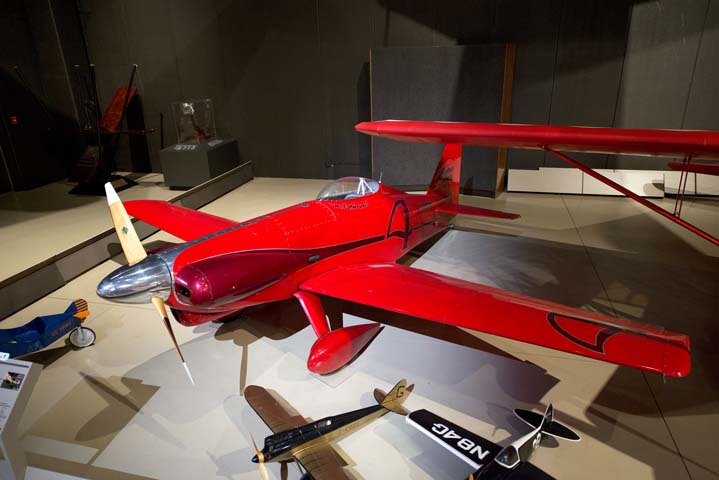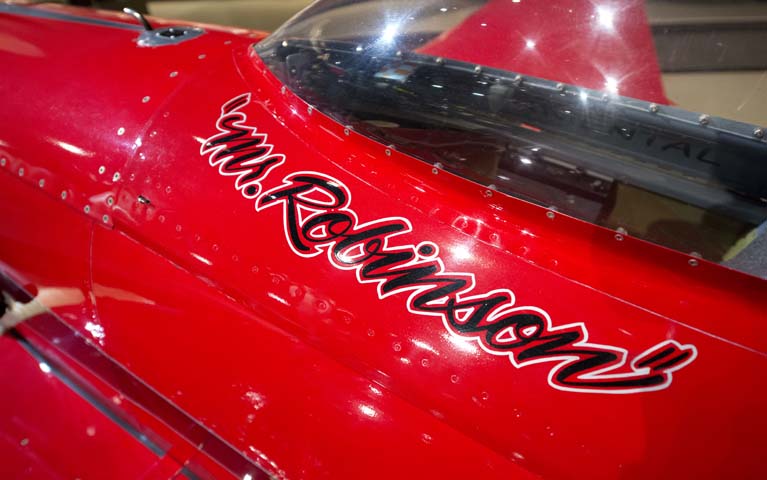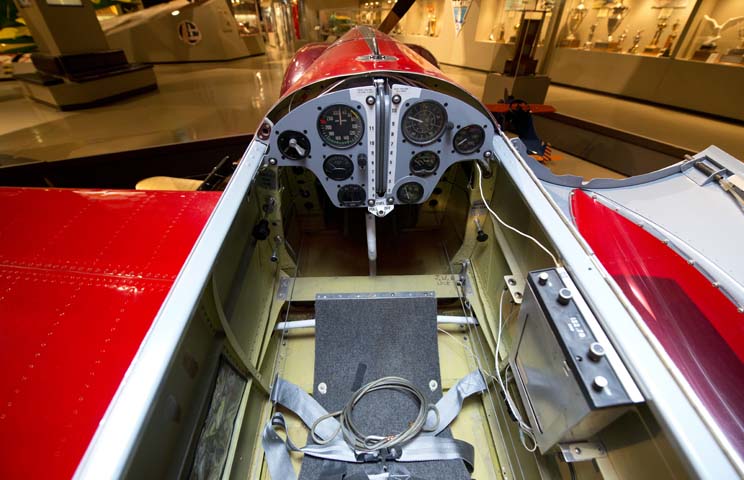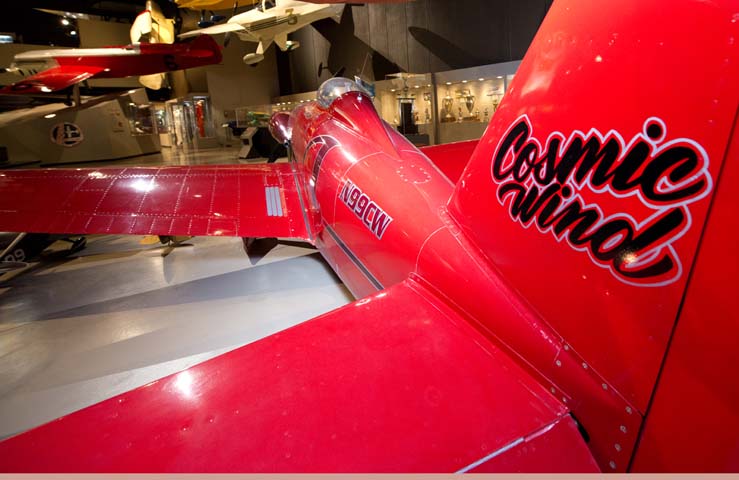1948 LeVier W-5 Cosmic Wind 'Mr. Robinson' - N99CW
Location: Air Racing & Aerobatics
The creation of the Goodyear racing class inspired racer and legendary Lockheed test pilot Tony LeVier to create a new airplane, so he put together a team of professionals that included his colleagues Herman “Fish” Salmon and Glenn Fulkerson, who were later joined by Irving Culver. As the drawings were finished, parts began taking form in workshops and machine shops all over the Los Angeles area, which were eventually all gathered at Maynard Guilford’s machine shop where the final assembly was done.
Three complete airplanes, dubbed Cosmic Winds, were manufactured and began racing in 1947, but they weren’t the front-runners the team wanted them to be. Just after ironing out engine problems and beginning to catch up with the winners, Lockheed noticed a discouraging number of pilots dying in Goodyear racing. Management didn’t want their two top test pilots risking their necks for a little prize money, and the Cosmic Winds were quickly sold to new owners.
In the late 1950s, Billy Robinson, one of the original race pilots for the Cosmic Wind, began building his own Cosmic Wind. Billy continued working on his aircraft until his untimely death in a J-3 Cub accident. The remains of the project shuffled through a series of owners until winding up with Joan Trefethen Alford. Bill Warwick finished the construction of the airplane for half ownership of the Cosmic Wind, which was named Mr. Robinson.
When completed, Mr. Robinson carried a lot of luxuries the originals didn’t, including a tail wheel rather than a skid. The C-85 was replaced with a Continental O-200 engine and a battery and starter were also installed. Throughout the entire project Bill said he wanted to finish the airplane the way Billy would have wanted and that included doing it all in aluminum. That meant no fiberglass, though the project consumed much more time that way, and in the end, Bill was forced to make the wheelpants out of composites.
Shortly after the Cosmic Wind completed testing, Bill died in the crash of a new T-18 he was testing for a friend. Mr. Robinson then passed through a couple different owners and was eventually obtained by Joanne Noar. Joanne donated the Cosmic Wind to the EAA Aviation Museum in 1999.
Length: 17 feet
Wingspan: 18 feet, 11 inches
Height: 4 feet, 5 inches
Empty Weight: 600 pounds
Maximum Speed: 180 mph
Seats: 1
Powerplant: Continental O-200
Horsepower: 100 hp




